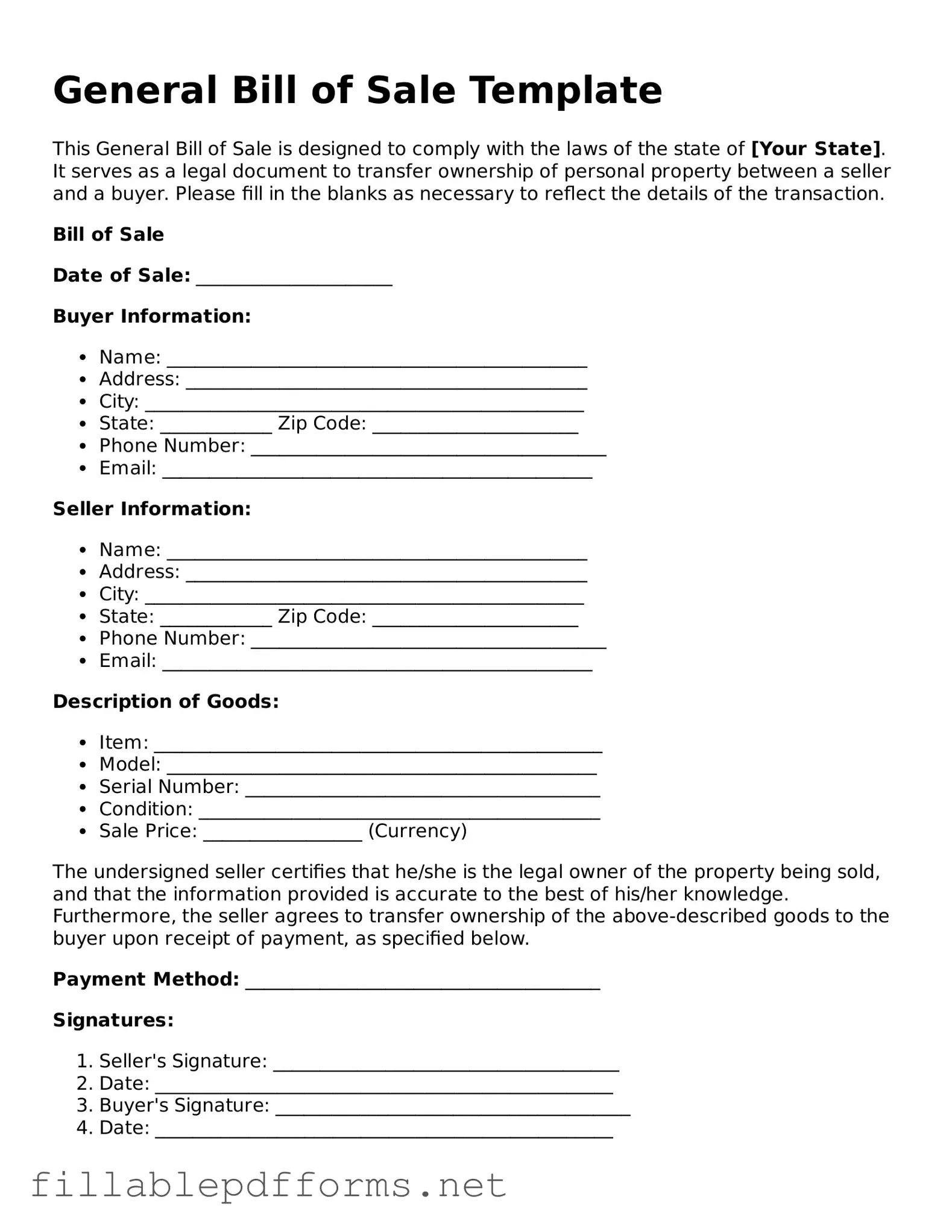When engaging in the sale or transfer of personal property, a General Bill of Sale form serves as a crucial document for both buyers and sellers. This form provides a clear record of the transaction, detailing essential information such as the names and addresses of the parties involved, a description of the item being sold, and the sale price. It often includes the date of the transaction and any warranties or conditions attached to the sale, ensuring that both parties understand their rights and responsibilities. By outlining these key aspects, the General Bill of Sale not only protects the interests of the seller but also offers reassurance to the buyer about the legitimacy of the purchase. In many cases, this form is necessary for registering vehicles or transferring ownership of valuable items, making it an indispensable tool in various transactions. Understanding how to properly fill out and utilize this form can help prevent misunderstandings and disputes down the line, allowing for a smoother exchange of goods.
